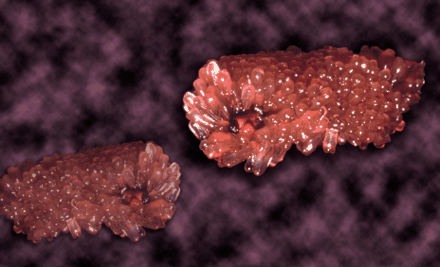Transcription of MDR1
A Therapeutic Target
- Kathleen W. Scotto, Ph.D. and
- Robert A. Johnson
- Memorial Sloan-Kettering Cancer Center and, Weill Graduate School of Cornell University, 1275 York Avenue, New York, NY 10021
- Address correspondence to KWS. E-mail k-scotto{at}mskmail.mskcc.org; fax 212-639-8972.
Abstract
Two decades ago, the overexpression of P-glycoprotein (Pgp) was first demonstrated to mediate the energy-dependent efflux of a variety of chemotherapeutic agents from tumor cells, resulting in the development of multidrug resistance (MDR). Not surprisingly, this discovery triggered an ongoing search for agents that would inhibit Pgp function, with the hope that by doing so the MDR phenotype could be reversed. As our understanding of Pgp function and pharmacokinetics has increased, this quest has become more urgent, as well as more complex.

The sea squirt Ecteinascidia turbinata, shown above as grape-like clusters of sheathed individuals, is the source of a novel chemotherapeutic agent. The organism
produces ET-743, which appears to interfere, in an exquisitely specific manner, with cellular transcription programs involved
in cancer. (Image provided by PharmaMar.)
- © American Society for Pharmacology and Experimental Theraputics 2001



